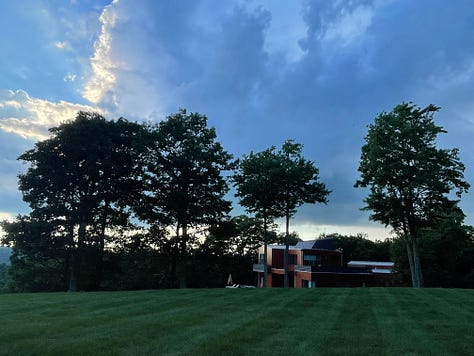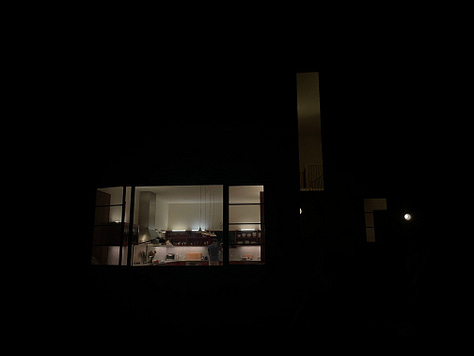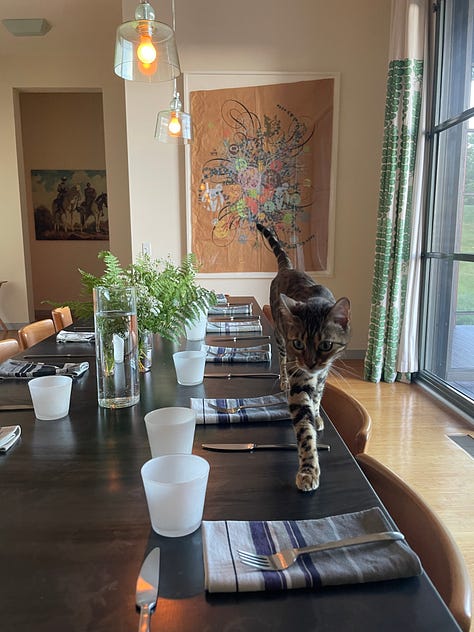From upstate New York to coastal New York to the city itself and suburban Massachusetts to rural New Hampshire, I’ve spent many a weekend at friends’ homes this summer. And the biggest difference between each house can be distilled to a single question: To antique or not to antique.
The relevance of this question might not be immediately obvious. Let me help you get there. When staying with my friend Annie in Austerlitz, New York over Fourth of July weekend, I asked her what she usually did during her upstate weekends. Passing by an antique shop, Annie remarked, “There’s not much to do here except to go antiquing and hike. This shop supposedly has fantastic antiques, though.” I asked her what she has found there, and she resolutely replied, “I don’t do antiques.”
My college friends were with me, and their shock was palpable. She doesn’t “do” antiques? Has she no respect for the past, no discerning eye for treasures among oddities? I was shocked, but not horrified; the strength of her statement surprised me, but I have no special attachment to antiques. My friends’ reactions were a different story; antiques are part of the very fiber of their beings. One of them, from Kansas City, has a treasure-hunting ability unparalleled by most. We became friends after I saw her dorm room—with perfect ambient lighting and snacks, I was already in favor of liking her, but add to that her collection of vintage glassware and hand-bound books (by her own hand) and I was sold. My friend Grace, from rural New Hampshire, grew up with antiques and shares this fondness for old things. I find myself squarely in the middle between antique-loving and -hating. I have an appreciation for the past, but I am also allergic to dust.






Annie’s dislike for antiques does not, by any means, indicate she lacks a curatorial eye. To the contrary—her taste is highly specific. Both of Annie’s houses, in Austerlitz and in Fire Island, are unmistakably beautiful, and everything in Annie’s homes scream Annie. This is no coincidence. Annie’s walls are sparse except for the gallery-worthy contemporary art sprinkled throughout, wallpaper is mostly confined to the bathrooms, and many of the bedrooms are painted white. The natural light in her houses might be their most remarkable feature, and the views from both—one of the Berkshires and the other of the Atlantic Ocean—are dramatic and directly accessible. You can take an amble through the woods from the backyard of her Austerlitz house or cross a small landing to the beach from the front yard of her island house. Both houses are remarkably modern,—the house in Austerlitz resembles a collection of boxcars, while the house in Fire Island is ship-like—but what stands out most is her furniture. Modular and functional, each piece is sleek and contemporary.
Would it surprise you if I said Annie is a New Yorker through and through? Efficient and forthright, Annie knows no nonsense. If you see a red-headed New Yorker with impeccable taste walking through the streets of Tribeca, unapologetic and magnificent, it’s probably her.






Grace, on the other hand, is definitely not a New Yorker. Between her family’s house and Annie’s, I don’t think two houses could be more different. Grace’s house is a pastel doll’s house—it is extraordinarily colorful, and it was built in 1840, as evidenced by the antique cookstove that warms the living room. Suffuse with cheery pinks, bright blues, and pale yellows, her house on a small hill is something out of a storybook. The wild blackberry bushes, two-horse paddock, black and calico cats, and six acres of New Hampshire forest ideal for frolicking, combined with the smaller-than-average height of the doorway and size of the furniture all signal that this is a house for Grace and perhaps only Grace (Grace is five-foot-four-inches tall), in the same way that Annie’s house is distinctly Annie’s. Their respective houses are equally charming because they are filled to bursting with the spirit of the people who inhabit them.


I have always loved visiting friends’ houses. As a little girl, stepping into friends’ bedrooms allowed me to peer into miniature dioramas of their internal worlds. So when I visited Grace’s house last weekend, that initial question kept drawing me back: What does the presence (or absence) of antiques in a home say about its inhabitants?
When formulating an opinion on antiques, there are two aspects to consider: The practical and the theoretical. As regards the former, there are several barriers set up against antiques: They are dusty, and if you are allergic to dust, you will probably have a negative experience shopping for them. The art of antique-loving is intrinsic to the enjoyment of antiques and the act of antique-shopping itself. One must like the cat-loving lady at the front desk, the smell of rotted wood, the cluttered space itself—or they must find the idea of antiquing sufficiently romantic to overcome the discomfort the shopping process involves.
There is also the theoretical haze of how antique-loving translates to admiring old things. An antique-hater might detest the sight of an early twentieth-century writing desk because it reminds them of their great uncle and his hoarding tendencies, while an antique-lover will see in the same desk Virginia Woolf sitting down to write The Waves. While an antique-lover may find a Knoll Saarinen dining table boring and overly reminiscent of the Jetsons, they may fail to appreciate the creative naturalism of its liquid-drop base.
After thinking about the question of antiques for an entire month, I have concluded it comes down to a fundamental difference in viewpoint, a central conflict between nostalgia and progressivism. Antique-lovers romanticize the past, while antique-haters romanticize the future. Sure, you can romanticize the future by looking apocryphally to the past (as Trumpies well know), but antique-lovers experience the present through a firmly rooted prism of sentimentality, while antique-haters do so with a sense of progressive optimism, an excitement for what is to come.
But what about the fact that we label Saarinen tables or Eames chairs, which date from the 1950s, as quintessentially “mid-century modern” pieces and discount them as antiques? At what point does a piece of furniture become an antique, emotionally speaking? If “modern” furniture does indeed count as antique, then how should we categorize the furniture of today? Debate!
~
This article is part of an ongoing series that breaks down the meaning of style. You can find other style-probing articles below.




